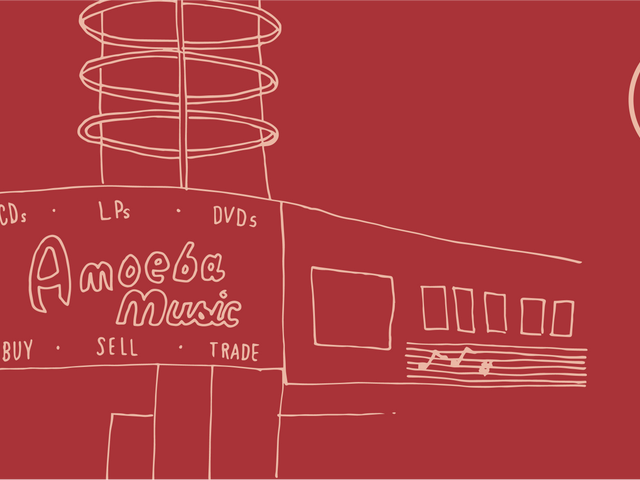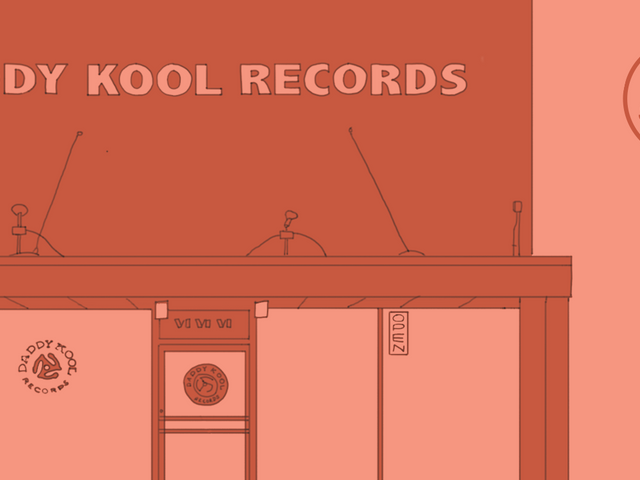Pembalasan Synth
A Look At The Misunderstandings, Redemptions and Renaissance of Synthesizers
Dalam sebuah adegan dari film favorit musim penghargaan 2016, La La Land, aktris yang bercita-cita Mia (Emma Stone) secara tak terduga bertemu dengan pianis jazz yang sedang berjuang, Sebastian (Ryan Gosling), di sebuah pesta dan menyadari bahwa dia telah dikurangi secara komik menjadi seorang pemain dalam band cover tahun 1980-an. Dia meminta untuk memainkan klasik new wave “I Ran” dari A Flock of Seagulls, yang dengan jelas membuatnya tidak nyaman. Kemudian, ketika Sebastian menghadapi Mia, ia mengajukan keberatan: “Tapi meminta ‘I Ran’ dari seorang musisi serius - itu terlalu jauh.” Ini adalah adegan komedi yang cerdas, tetapi itu mengangkat pertanyaan yang lebih besar: apa yang membuat “musisi serius” menolak suara synth-driven yang khas dari pop tahun 80-an?
"And of course there was nothing more repellent than the synthesizer,” Morrissey once remarked in a November 1983 interview with British pop/rock newspaper Sounds. It was a provocative claim, yet hardly a singular one. By the early ’80s, synthpop’s dominance of the pop charts – arguably kicking off with Gary Numan’s “Cars” in 1979 and reaching its pinnacle during winter 1981-82, when the Human League’s “Don’t You Want Me” and Soft Cell’s “Tainted Love” became ubiquitous hits – had led to an inevitable counter-cultural backlash, with many believing the genre was synonymous with consumerism and inauthenticity.
Synthpop was often positioned in binary opposition to rock, whose harder and more muscular sound was equated with a greater sense of substance. While critics waxed nostalgic for the sonic purity of the ’60s’ and ’70s’ earnest, guitar-driven arrangements, they maligned synthpop for its seeming shallowness and paint-by-numbers artificiality. In Rip It Up and Start Again: Postpunk 1978-84, music journalist Simon Reynolds describes Les Pattinson of Echo & The Bunnymen saying outright, “A lot of these kids just don’t have talent [...] Any farmyard horse can kick a synth.”
Additionally, when acts like Queen and Neil Young – both known best for their traditional rock artistry – made forays into synth-laden sound with Hot Space and Trans respectively in 1982, reactions were puzzled at best. Queen had only started using the synthesizer with 1980’s acclaimed The Game, but Hot Space brought that experimentation to new heights by employing a drum machine and sparser, slicker production (most notably in “Body Language,” the band’s only single to lack prominent guitar). While it was a stated influence on Michael Jackson’s seminal Thriller, released later that year, it’s nevertheless remembered as one of Queen’s most disappointing albums.
Similarly, many longtime Young fans found Trans off-putting for its sci-fi soundscape, which was influenced by German electronic pioneers Kraftwerk and featured heavy usage of the synclavier and vocoder. The album’s use of machinelike distortion was methodical and intended to reflect Young’s attempts to communicate with his son Ben, who was nonverbal and had been born with cerebral palsy. However, the choice seemingly fell flat – Trans, along with subsequent rockabilly album Everybody’s Rockin’, formed the basis of a lawsuit that Young’s then-label Geffen Records filed against him, claiming that Young had deliberately produced unviable, “musically uncharacteristic” work.
Common criticisms of synthpop and its fanbase focused on its “soulless” nature, a mentality couched in unspoken standards of otherness and what constituted genuine musical identity. Synthesizers quickly became popular because of their ease of access and play – in a 1981 article from rock publication Trouser Press, Dave Gahan of Depeche Mode commented, “In pop music nowadays you don’t need technical ability, you need ideas and the ability to write songs. That’s the main thing.” The synthesizer was a democratizing instrument, and it seemed to threaten the belief that music production was uniquely reliant on virtuosity and technical skill. Irish punks the Undertones succinctly captured this attitude in their 1980 single “My Perfect Cousin,” which sneeringly describes the titular “golden boy” whose “mother [buys] him a synthesizer / got the Human League in to advise her” as a conformist poseur who “[plays] along with the art school boys” and is “in love with himself.”
Yet the stereotype that synthpop was a bland, monolithic genre that required little expertise is plainly untrue. Early 1980s chart-toppers like “I Ran” and “Tainted Love” used machinery to evoke the sensation of nervous, all-consuming erotic unease, while expertly produced earworms like “Don’t You Want Me” and Orchestral Manoeuvres in the Dark’s “Enola Gay” made catchy hooks integral to their deceptively subversive songs about sexual politics and anti-war protest, respectively. However, despite (or perhaps because of) the synthesizer’s affordability and quick learning curve, synthpop was perceived as coolly contrived and commercial – in comparison to the organic, grassroots passion of punk and alternative rock. On the seeming polarity between the genres, OMD’s Andy McCluskey wryly observed, “In some ways it’s quite strange that synthesizers were so hated in the punk era. They’re the ideal punk instrument if you believe in the ethic of ‘anybody can do it.”
Furthermore, where guitar rock was dependably masculine, synthpop’s presentation of gender was distinctly hazier. Reynolds argues that within American indie scenes, the predominantly English synthpop surge was associated with queerness – detractors scorned the genre as mere “art-fag” music, and an indignant response to the Trouser Press article characterized its performers as “elitist closet queens.” The genre displayed unabashed sensuality, sometimes through instrumentation alone – for instance, “Don’t You Want Me” and Eurythmics’ “Sweet Dreams (Are Made Of This)” both feature chilled, slinky riffs that suggest the push and pull of selfish desire. But these themes could be made lyrically explicit as well. Depeche Mode’s “Master and Servant” declares, “Domination's the name of the game / in bed or in life / They're both just the same” over wonderfully unsubtle whip-and-chain sound effects, while Soft Cell’s campy “Sex Dwarf” goes even farther with its yearning for “you / on a long black leash” and moan-laced titular refrain.
Artists also challenged the era’s sexual orthodoxy through their public images – ranging from Martin Gore sporting skirts and leather bondage gear to Marc Almond and Phil Oakey’s penchant for eyeliner and lipstick and Dead or Alive’s Pete Burns’ chameleonic, surgically augmented appearance. Androgyny was a common motif for female artists as well, evident in Annie Lennox’s signature suits and the strikingly Amazonian airs of Joanne Catherall and Susan Ann Sulley. Alongside the synthesizer’s ability to evoke space-age sonic precision, these aesthetics suggested a utopian future – specifically, one where gender performance could be a free and unconditional choice.
While more chauvinistic purists could cite these representations as further proof that synthpop was somehow unnatural, the “gender-bending” nature of the genre encouraged female and/or LGBTQ audiences who felt alienated from the machismo of mainstream rock culture. It seems fitting, too, that new wave and synthpop directly stemmed from the contributions of Wendy Carlos – a transgender woman who, in addition to popularizing the Moog synthesizer with the revolutionary classical-electronic 1968 album Switched-On Bach and composing the scores to A Clockwork Orange, The Shining, and Tron, was also one of the first public figures to disclose undergoing gender reassignment surgery and later spoke openly about her dysphoria. For all synthpop’s connotations of Reagan-era corporatism and homogeneity, any closer look at the genre would place it firmly on the opposite side of the culture wars.
After all these years, the synthesizer seems to be getting a well-deserved redemption arc. During the late 2000s, it became a prominent element in several pop hits, from Lady Gaga’s breakout “Just Dance” to La Roux’s “Bulletproof” – but since then, synthpop seems to have undertaken a subtler renaissance. It’s wormed its way back into fashion alongside the rest of 80s pop culture nostalgia (hello, Stranger Things) and even has respectable indie cachet, thanks to acts ranging from the Pitchfork-friendly Future Islands to cult pop goddess Carly Rae Jepsen.
Moreover, with Depeche Mode currently on tour and fresh off the release of their latest album Spirit, the narrative seems to have come full circle. Its second track, the markedly topical “Where’s the Revolution,” finds Gahan’s baritone crooning, “You've been pissed on / for too long / your rights abused / your views refused,” over deep, weighty digital ripples. In 2017, it doesn’t seem too far off to expect that the revolution will be synthesized.
Aline Dolinh is a writer from the D.C. suburbs with an earnest passion for 80s synthpop and horror movie soundtracks. She is currently an undergraduate student at the University of Virginia and tweets @alinedolinh.
Bergabung dengan Klub!
Bergabunglah sekarang, mulai dari 44 $Diskon eksklusif 15% untuk guru, mahasiswa, anggota militer, profesional kesehatan & penjaga pertama - Verifikasi sekarang!







